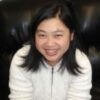
Jiang, Ying
Primary Appointment
Assistant Professor of Research, Microbiology, and Cancer Biology, Microbiology, Immunology, and Cancer Biology
Education
- PhD, Biochemistry and Molecular Biology, Indiana University, School of Medicine
Contact Information
1340 Jefferson Park Avenue
Charlottesville, VA 22908
Telephone: 4349820074
Email: yj2p@virginia.edu
Research Disciplines
Cancer Biology, Cell and Developmental Biology, Genetics
Research Interests
OPC homeostasis in brain
Research Description
Maintaining tissue integrity is critical for a healthy body. Cell competition ensures tissue integrity by eliminating sick cells from the population. However, oncogenic mutations can convert a normal cell into a “super-competitor” and hijack cell competition mechanism to their advantage, eventually twist normal homeostasis into a one-sided winning. However this “twist” is phenotypically hidden unless one uses a genetic mosaic system in which mutant and WT cells coexist in the same animal and are unequivocally distinguishable. Mosaic Analysis with Double Markers (MADM) is such a genetic system that can generate a small number of cells carrying oncogenic mutations that mimics clonal origin of cancer. These mutant cells are permanently labeled to allow longitudinal tracing. Moreover, MADM system generates a pair of green mutant cell and a sibling red WT cell, allowing Green to Red (G/R) ratio to reliably assess whether the mutations confer the expanding capability.
Glioma is a devastating brain tumor. Previously, using MADM system, we found that two commonly found mutations in glioma patients, p53 and Nf1, enabled the expansion of a specific cell lineage in the brain called oligodendrocyte precursor cells (OPCs), and thereby pinpointing it as a cell of origin for glioma. We further revealed that p53 and Nf1 mutations enable OPCs to expand throughout the brain parenchyma at the cost of neighboring WT OPCs, indicative of mutant OPC competition. Nf1, not p53 mutation is sufficient to mediate mutant OPC competition; yet not sufficient for gliomagenesis. On the other hand, blocking mutant OPC competition completely prevented gliomagnesis, demonstrating its indispensable role in malignant progression. As importantly, orthografted tumor OPCs can outcompete WT OPCs in immuno-compromised mice, suggesting that cell competition occurs both before and after malignant transformation. Finally, data consistent with OPC competition were found in human glioma samples and even when normal human OPCs were transplanted into mouse brains. Taken together, we discovered that cell competition among OPCs relies on cross-species conserved mechanism and occurs throughout normal homeostasis, pre-malignant and malignant stages of glioma. Our finding is poised to have significant long-term impact to clinical practices, because taking cell competition into consideration could lead to drastically unorthodox and highly effective prevention and treatment strategies for deadly glioma. From the perspective of regeneration therapy, it’s conceivable that one could take advantage of cell competition to rejuvenate OPC pool in patients with de-myelination disease for better myelin repair.
